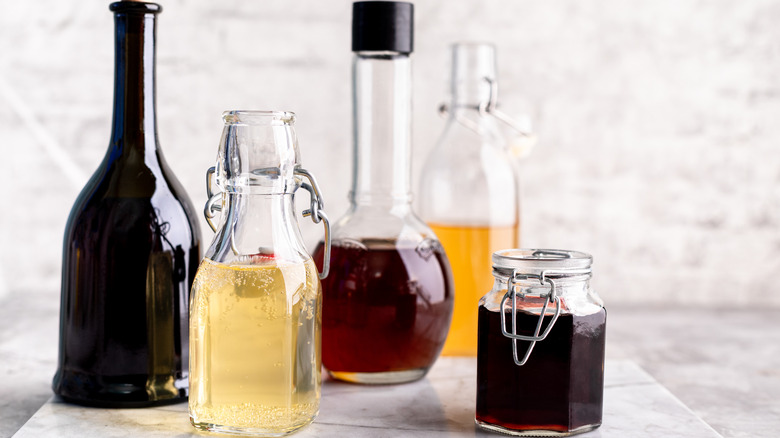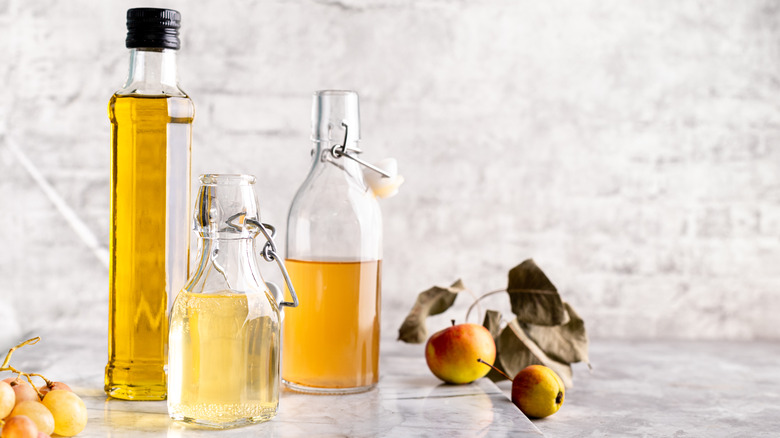The Reason Chefs Love White Balsamic Vinegar
A culinary staple pretty much since the dawn of civilization, New World Encyclopedia says vinegar was mentioned in Babylonian scrolls dating all the way back to 5000 BC. The word vinegar comes from Old French and means "sour wine," and in the past, it was also known as the "poor man's wine." This is an apt description of the ingredient considering its probable origin story: Vinegar was likely a happy accidental byproduct resulting from forgotten wine (via Harvard Health).
Most carbohydrates can be fermented into vinegar, Food Revolution notes, however, you're probably most familiar with ones made from grapes (wine vinegars) or apples (apple cider vinegar). Wine vinegars are often found in foods like in dressing or marinades, while some people turn to apple cider vinegar not for its culinary uses, but for its alleged health benefits, which include weight loss and fighting acne (via Healthline).
Balsamic vinegar, however, is in a class of its own. The vinegar — made only in the Emilia-Romagna region of Italy — is as intense in flavor as it can be for your checkbook. Serious Eats shares some aged varieties have been known to cost up to $200 an ounce. However, it's not the pricey traditional balsamic bottles that have chefs excited, but its sibling white balsamic that's the vinegar du jour.
What sets white balsamic vinegar apart
White balsamic vinegar is made from the must — essentially, the unfiltered juice — from the Trebbiano grape variety grown in Emilia-Romagna (via The City Cook). It differs from traditional balsamic because it is cooked at a lower temperature in order to avoid caramelization and is aged for a shorter period of time. Because of this, white balsamic has all of the sweetness we associate with balsamic, but with a paler color and milder flavor, which makes white balsamic a welcome addition to summery meals.
Chefs and foodies in the know love the stuff. According to Bon Appétit, chefs like David Nayfeld of San Francisco's Che Fico, for example, appreciate the ingredient's ability to add brightness dishes. (Nayfeld uses white balsamic in salads and on vegetables.) Another reason many reach for the pale bottle as opposed to its darker counterpart is that white balsamic's clearer hue won't muddy the colors of your food. Because we truly do eat with our eyes first, per The Guardian, presentation can really make or break a dish.
If you want to dip your toes in the white balsamic pool, Cooked Best explains the vinegar is an excellent choice for braised meats, stirred into soups, or in salad dressings, while the New York Times recommends pairing it with cheese, seared scallops, or peaches. You can even add white balsamic vinegar into a cocktail for a tangy component or serve it diluted with sparkling water for a mocktail — just remember, a little goes a long way.

